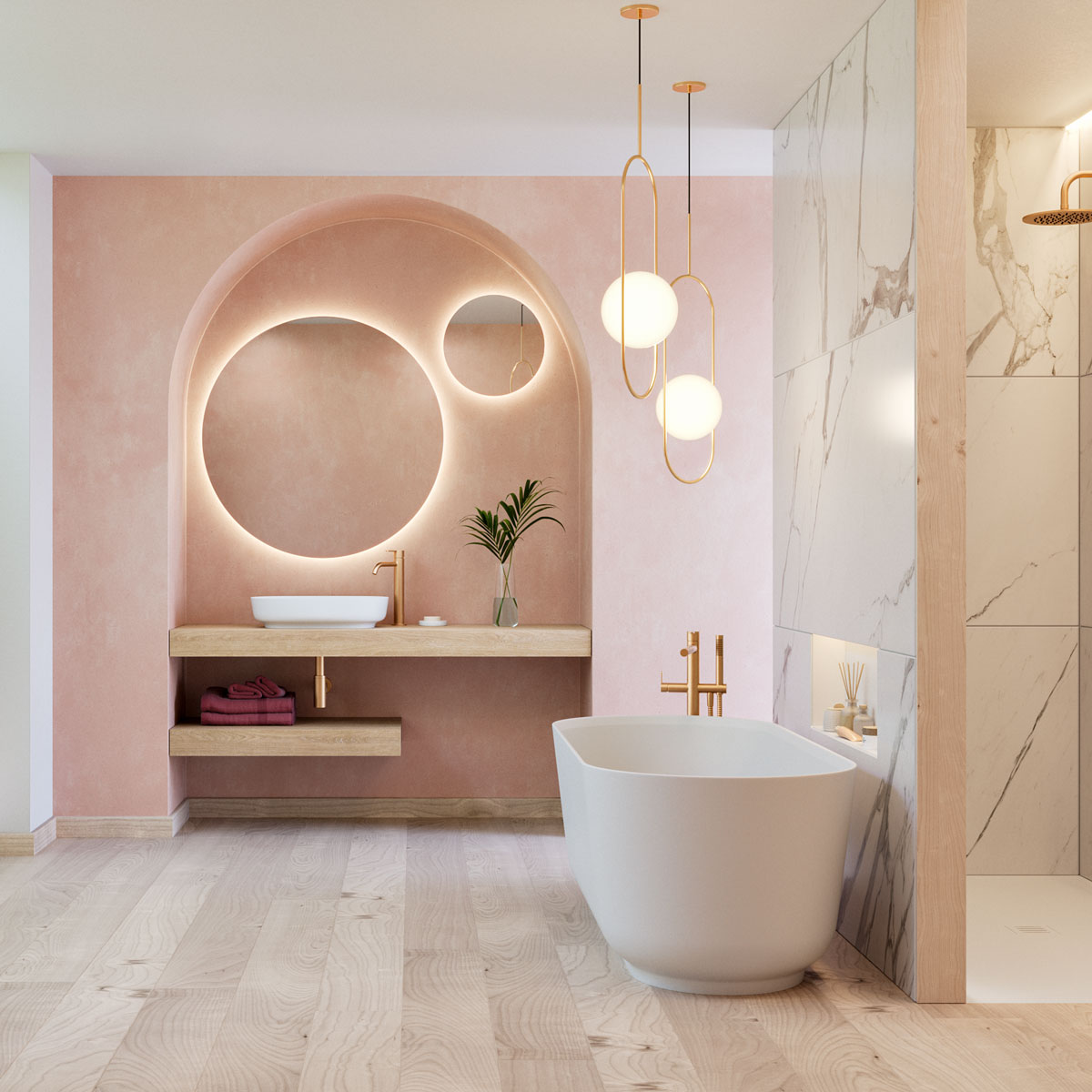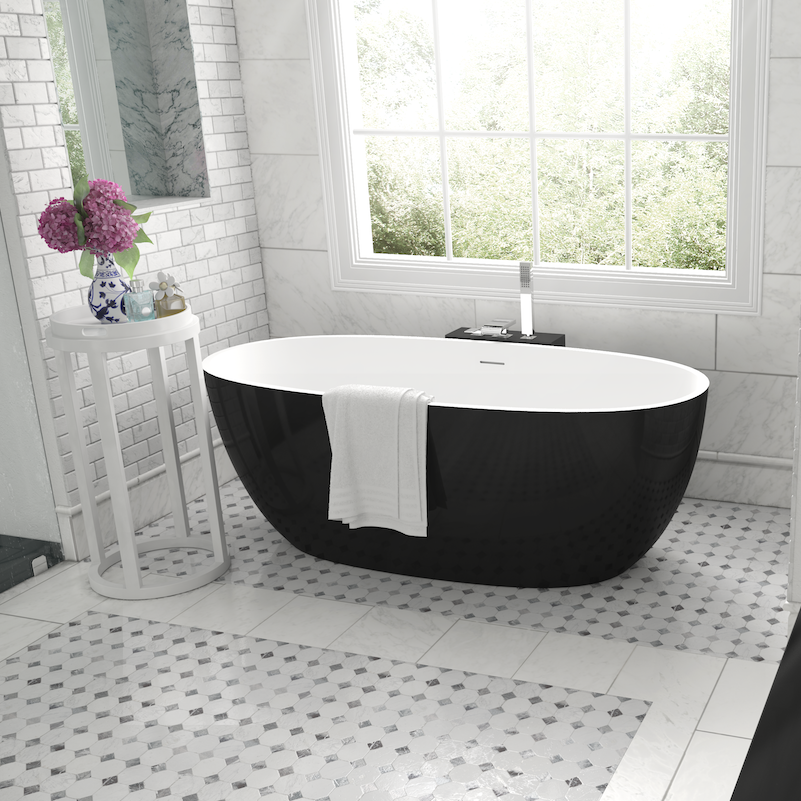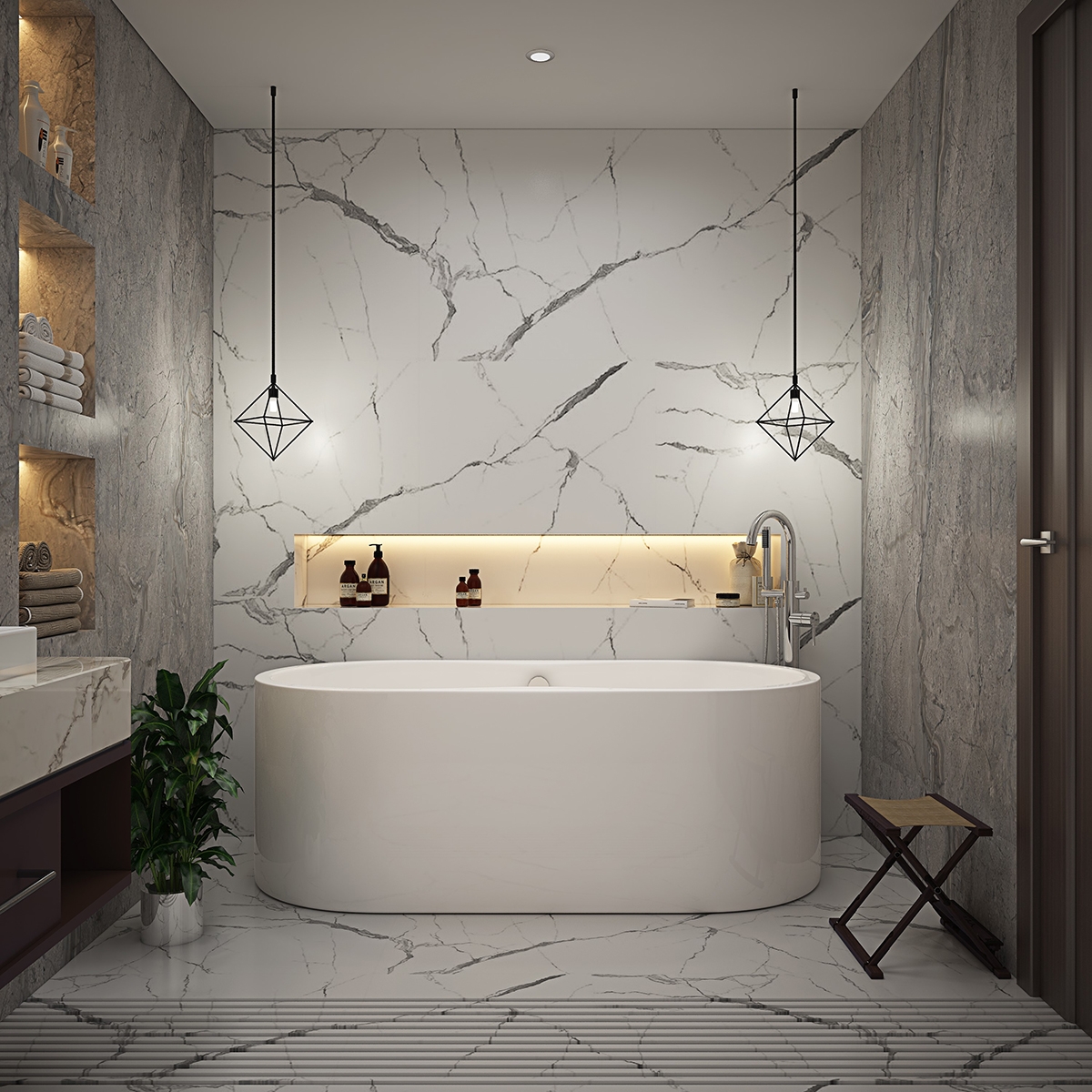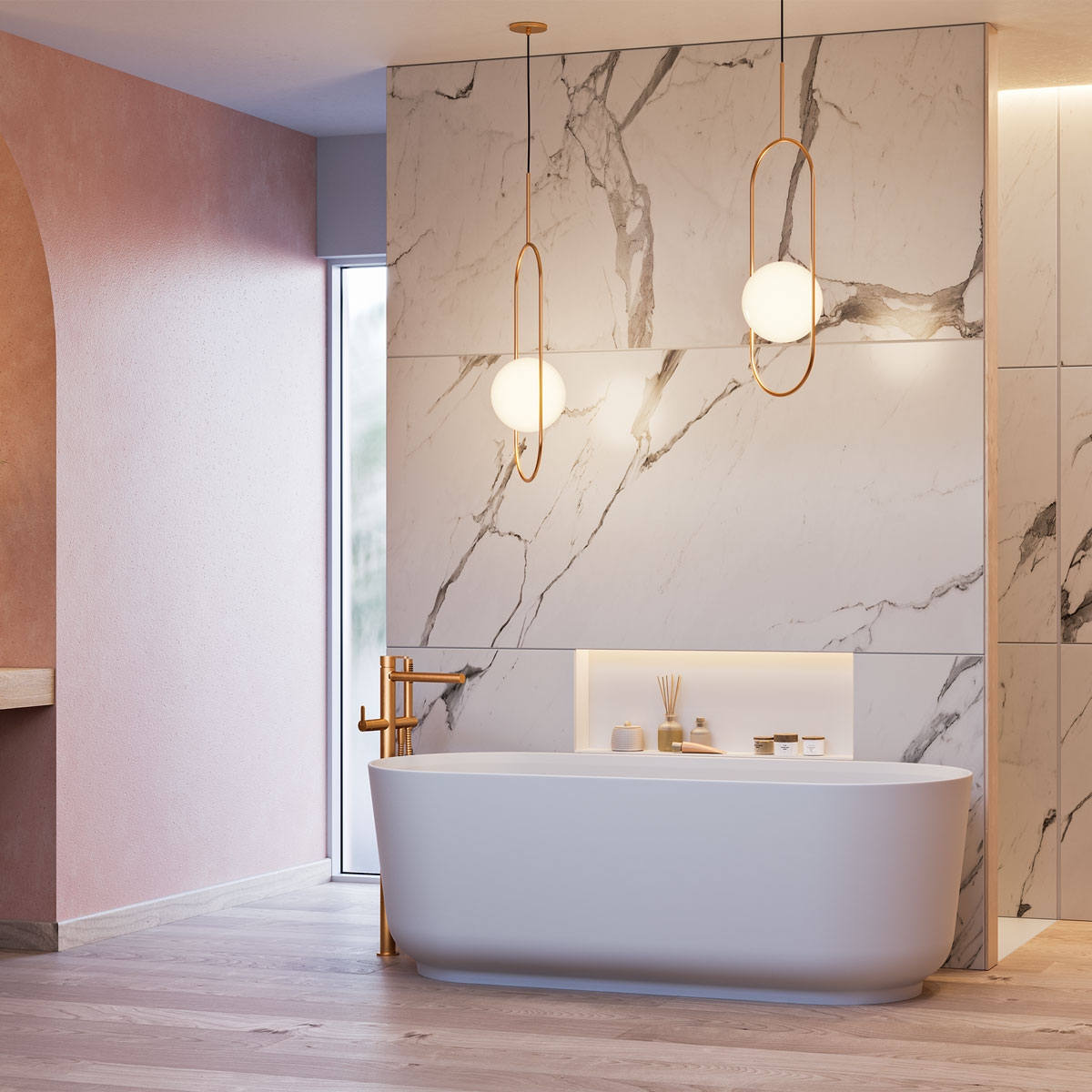
What is the Best Flooring for Bathrooms?
Thinking about remodelling your bathroom but unable to decide on what kind of floor you should put down? A bathroom is, of course, an environment with a lot of moisture, so you’ll probably want to narrow your choices down to a material that’s waterproof or, at least, highly resistant to moisture. (Long gone are the, frankly best forgotten, days of putting carpet on the bathroom floor.) But, of all the various impermeable materials available, which flooring is truly best for bathrooms? Let’s take a look at some of the possibilities.
Contents
Glazed ceramic or porcelain tile
Marble and natural stone flooring

Nantes Mini Freestanding Solid Surface Bathtub - Black & White - 150cm
Glazed ceramic or porcelain tile
When it comes to finding the most suitable flooring for bathrooms, porcelain and glazed ceramic are pretty hard to beat for water resistance, particularly the former. You might well wonder, “what’s the difference between porcelain and ceramic?”, and you’d be right to. The answer is, quite simply, not a lot. Porcelain is just a type of ceramic with a lower water absorption rate (less than 0.5%).
The benefits of porcelain and glazed ceramic tiles aren’t just practical, either. They’re also aesthetic. Today, there are so many different styles on the market that you can pretty much have any look you want. There are porcelain tiles that imitate terracotta, stone and even wood—and they’re not unconvincing in their appearance.
Ceramic tiles come in all shapes and sizes and, depending on the brand and size, you may be able to mix-and-match certain tiles to create your own unique bathroom floor design. They’re also incredibly easy to lay, if you buy them pre-mounted onto mesh and they’re a great, cost-effective option, too—far less expensive than many natural materials.
Porcelain and ceramic tile is great because it’s:
- Relatively inexpensive
- Waterproof
- Hugely varied
- Easy to clean
Porcelain and ceramic tile isn’t so great because it’s:
- Cold on bare feet
- Slippery when wet
- Easily broken by heavy objects
- Arguably less luxurious than natural materials
Solid surface material
A stone-based material that’s heated to extreme temperatures and then cast into shapes, solid surface material like Corian® or Krion® is an excellent choice for floor tiling—especially in a luxury bathroom.
For starters, the joints between the tiles are completely hidden by the special glue made just for solid surface, which means it looks completely seamless. Or it can be cast in a single piece with no joints at all. No great shakes, you might think—concrete doesn’t have joints, either. When it gets exciting, though, is what you think about the possibilities the aesthetic flexibility of solid surface opens up.
You can find solid surface that looks like marble, wood, or stone. You can find bright primary colours and subtle shades drawn from nature. There’s black solid surface flecked with sparkle and solid surface that looks almost indistinguishable from ice. Planes of that material covering your bathroom floor seamlessly can look absolutely stunning.
The major practical benefit of Corian®, Avonite Surfaces®, Hi Macs® and other brands of solid surface is that they’re all 100% waterproof. So, the floor beneath the tiling will never be damaged in the way it might by water seeping through a porous floor tile.
Solid surface flooring is great because it’s:
- 100% nonporous
- Completely seamless in its appearance
- Made from a high percentage of natural stone
- Scratches can be easily polished out
- Available in a massive array of colours and styles
- Easy to keep clean—just mop it with warm, soapy water
Solid surface flooring isn’t so great because it’s:
- Easily scratched if you have pets who walk on the floor
- More expensive than porcelain and other, less luxurious, materials
- Cold to walk on in cooler climates

Aberdeen Freestanding Acrylic Bathtub - 170cm
Marble and natural stone flooring
Probably the most traditionally desirable of all luxury flooring materials, marble, quartzite (such as blue macauba) and stone floors are strictly for those who can afford them. Quarried in giant slabs and then polished to a high sheen, these materials represent the height of elegance and opulence in even the most minimal bathrooms.
The porous qualities of natural stone are often cited as a reason not to invest in this expensive material for flooring as it indicates high potentiality for water damage. But, then, you look at the streets of cities like Cartagena and Valencia in Spain, and Verona in Italy, and it’s obvious that marble stands the test of time. (There’s a reason “set in stone” is a phrase that denotes permanence.)
Look to the bathrooms of the rich and famous and you’ll see that they very rarely don’t include at least a hint of marble somewhere—that’s also a great indicator as to its desirability and quality as a flooring material. Natural rock formations are uniquely veined, come in all different colours and densities, and offer a huge variety of options to those who want truly opulent flooring.
Marble flooring is great because it’s:
- Made to last a lifetime
- Unique from one slab to the next
- Somewhat translucent, which makes it glow slightly under lighting
- Able to be polished to a very high sheen
Marble flooring isn’t so great because it’s:
- Probably the most expensive type of flooring
- Easily scratched and stained—though, see above for more on the longevity of marble
- Difficult to replace—there’s no like-for-like for a unique piece
- Cold underfoot in certain climates

Lyra Corian® Design Freestanding Bathtub
Engineered wooden flooring
If you love the look of wood in your bathroom, engineered wood is a great alternative to hardwood, which is likely to buckle, discolour and even rot in a high moisture environment.
Engineered wood has far superior dimensional stability because its base is made of plywood, which essentially glues thin, criss-crossed pieces of wood together with the grain running in different directions from ply to ply. This creates a tension that stops engineered wood from warping.
The great thing is, it looks exactly like wood because that’s what the top layer is made of—real hardwood veneer. But, because it’s plywood, it’s actually less expensive than hardwood so has the added benefit of saving you money as well as looking stunning. When you do need to replace it—and eventually you will because wood is wood, at the end of the day—you won’t have to shell out a huge amount to do so.
Wooden flooring can give your bathroom a great country-cottage or Dutch colonialist feel to it. It's natural and, so, feels luxurious—but it’s a more modest sense of luxury and less showy than its stone and marble counterparts.
Engineered wooden flooring is great because it’s:
- More durable than hardwood in moist environments
- Made of real wood—so looks as authentic as hardwood flooring
- Able to give your home a rustic, traditional feeling
- Less cold underfoot than stone and porcelain
Engineered wooden flooring isn’t so great because it’s:
- Got a limited lifespan
- Relatively expensive considering how long it lasts
- Quite easy to chip, revealing the plywood beneath